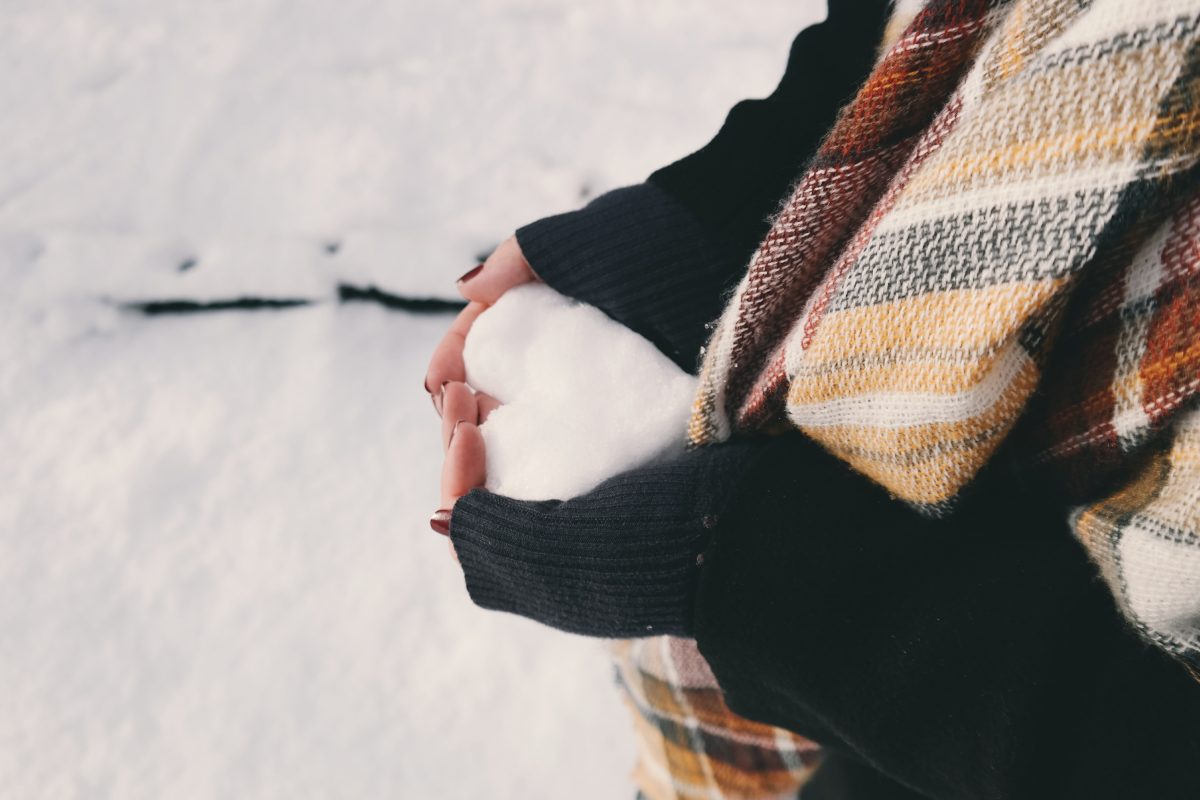
Though winter brings holidays, family gatherings, seasonal foods, and an excuse to get cozy near the fireplace, it also comes with its own complications. Cold temperatures, icy weather, coughs, colds, and runny noses make the winter months a challenging time to keep your family healthy. While we can’t always control how germs and weather events affect our lives, there are a few steps we can take to prepare your home and family for the colder months and lessen the havoc winter can wreak. Here are six strategies to keep your family healthy this winter.

One of the best ways to ensure your family is well defended against infections is to boost your immune systems with vitamin-rich foods. The winter months are notorious for holiday gatherings, often centered around large meals and sweet treats. While it’s okay to enjoy comfort foods in moderation, it’s important to balance these with healthier options like fruits, berries, vegetables, whole grains, and healthy fats found in nuts and fish.
Citrus fruits are especially important because they are high in vitamin C, which helps to fight infections. Although citrus is probably the most famous source of vitamin C, it may surprise you to learn that red bell peppers contain twice as much. Spinach and broccoli are also packed with vitamins and antioxidants, though it’s worth noting that their health benefits are the strongest when they are cooked as little as possible.
As any parent knows, it’s not always easy getting children to eat healthy. However, by keeping plenty of healthy snack options ready, setting a good example with your own habits, and praising healthy food decisions, you can encourage your children to enjoy a nutritious diet and stay well this winter. One way to ensure they get a variety of foods is to ask them to eat healthy foods of at least four different colors every day.
Taking care of some basic home maintenance early will ensure your home is prepared for the colder winter months. Start with the outside, making sure your gutters and downspouts are clear of leaves and other debris. Doing this before any nasty weather sets in will keep your roof in good condition. Plus, you won’t have to go out into bad weather later to dig frozen leaves out of your gutter.
Inside your home, check for drafty areas where cold air might seep in. By filling in any cracks with foam insulation or caulk, you can keep your family warm and avoid wasting excess energy. Even if you haven’t noticed any drafts, check the weather stripping around all your doors and windows.
Waiting until the first cold snap to test your furnace can leave your family in the cold. Instead, have a professional inspect your furnace well before winter sets in to make sure there aren’t any problems. Similarly, if you have a fireplace, you should have a professional inspect and clean your chimney. This is a good time to go over fire safety practices with children as well as test your fire alarms and replace their batteries.
Once you start running your furnace regularly, you’ll want to retain as much heat as possible as it rises up through your house. To ensure this, check the quality of the insulation in your attic. Also, one simple trick for efficiently heating your home is to reverse the direction of any ceiling fans. This allows warm air to better circulate throughout the room.
Aside from keeping your family warm, you’ll also want to prepare your pipes for freezing temperatures. You or a professional should cover the pipes beneath your home with insulating foam or heat tape. If you’re still worried your pipes might freeze, you can turn on a faucet to leave a trickle of water running. This will usually be enough to prevent your pipes from freezing.
Keeping the cabinet doors open beneath interior sinks can allow warm air to reach those pipes. However, you should be cautious with this, especially if there’s a risk that a young child could climb underneath the cabinet and get themselves stuck, or worse, explore any cleaning products you might store in these areas.
Personal hygiene is crucial during cold and flu season, and regular hand washing may be your family’s best defense against the spread of germs. Especially if your child comes into contact with other children, it’s important to encourage them to wash their hands after school or a play date, before meals, and after they use the bathroom. Depending on your child’s age, they’ll likely need some assistance as well as a lot of reminders and encouragement.
You can make the process fun by choosing soap products that foam or change colors or creating a simple chart that kids can place a star sticker on each time they wash their hands. Singing a short song like “Happy Birthday” or “Twinkle, Twinkle Little Star” can also help ensure children wash their hands for the recommended minimum of 20 seconds. Alcohol-based hand sanitizers can be helpful if you’re on the go. However, these aren’t as effective against germs and they won’t clean visibly dirty hands.
The flu virus can survive on some surfaces in your home for up to 24 hours, which means frequent cleaning is a must. Some of the most common areas that harbor these germs include tables, counters, faucets, remote controls, computers, phones, sponges, towels, and linens. But perhaps the most troubling place these germs linger is on the toys your child plays with. Babies and young children won’t think twice about putting their favorite toy in their mouth, which could be disastrous if germs are lurking.
Some plastic toys can be run through the dishwasher on the gentle cycle. Just be sure to turn off the heated dry feature or you may have a mess of melted plastic to deal with. Many stuffed animals or plush toys can be cleaned using your washing machine on the gentle cycle. Again, it’s better to hang dry these than to run them through your dryer. Thinking ahead toward disinfecting purposes, it may be a wise goal to buy toys that don’t have electronics or removable parts. If you have to clean some toys by hand, be sure to use a non-toxic cleaner and allow plenty of time for the toy to dry before giving it back to your child.
For most surfaces in your home, you can use a number of common household cleaning products in order to kill the flu virus. If possible, use disposable paper towels in order to keep germs from building up in sponges and cloth towels. Though using a cleaning solution that includes bleach will certainly do the job, bleach can be harmful to your health. Instead, you can reach for natural disinfectants from the store or opt for homemade solutions. If you choose to make your own natural detergent, be aware that not all natural products have been proven to kill cold and flu viruses.
It’s almost inevitable that someone in your family will get sick this winter, and if one person gets sick, there’s a chance it will spread to everyone. In preparation, you might choose to stock up on some useful over-the-counter medications like ibuprofen, cough suppressants, and decongestants. Carefully read the uses and directions for each of these, making sure they list an appropriate dosage for children. When in doubt, call your doctor’s office or pharmacist, especially if your child is already on medication. You can also talk to your doctor about whether a flu vaccination is appropriate for your child.
Although some drugs might seem like a cure-all, you should avoid misusing medications like antibiotics. Aside from the fact that these aren’t effective against viral conditions such as common colds, bronchitis, sinus infections, and ear infections, the overuse of antibiotics contributes to a rise in drug-resistant superbugs, which could pose a greater risk to your family later on. If your doctor does prescribe a medication, be sure to complete the entire treatment cycle.
If someone in your family is sick, encourage them to sneeze or cough into a tissue or the crook of their arm rather than in their hands. This will help prevent the spread of germs through the air as well as on other frequently touched surfaces like doorknobs or light switches. Also, as a general practice, everyone in the home should avoid touching their eyes, nose, and mouth as this is the quickest way to get sick.
A fever may cause your child to be dehydrated, so it’s important that they take in plenty of fluids. A stuffy nose may make drinking uncomfortable, which doesn’t help. Water is often the best choice, but your child may find this boring. You may need to offer other options like fruit juice, Pedialyte, and warm decaffeinated tea. Some foods like soup, gelatin, and popsicles can also help, though if possible, look for popsicles that are sugar-free or made from real fruit juice.
Exercise, fresh air, and sunshine are key to a healthy mind and body, but it’s easy to want to huddle inside and try to avoid the outdoors during colder seasons. However, when possible, it’s important to go outside for at least a few minutes every day. You can prepare for cold temperatures by bundling everyone up in layers of cotton clothing. Wind- and water-resistant winter coats can also extend your child’s playtime outside by keeping their warm layers of clothing dry. The same goes for boots and gloves (or mittens for younger children).
Taking a walk through a park or making up games to play in the yard is enough to give your family a chance to get some exercise and build your immune systems. If the sun is out, just ten to fifteen minutes of exposure will allow everyone to absorb their daily dose of Vitamin D, which helps to promote higher energy levels, better moods, and memory.
How does your family stay healthy during the winter? Let us know in the comments below!
Author Bio:
Avery T. Phillips is a freelance human being with too much to say. She loves nature and examining human interactions with the world. Comment or tweet her @a_taylorian with any questions or suggestions.